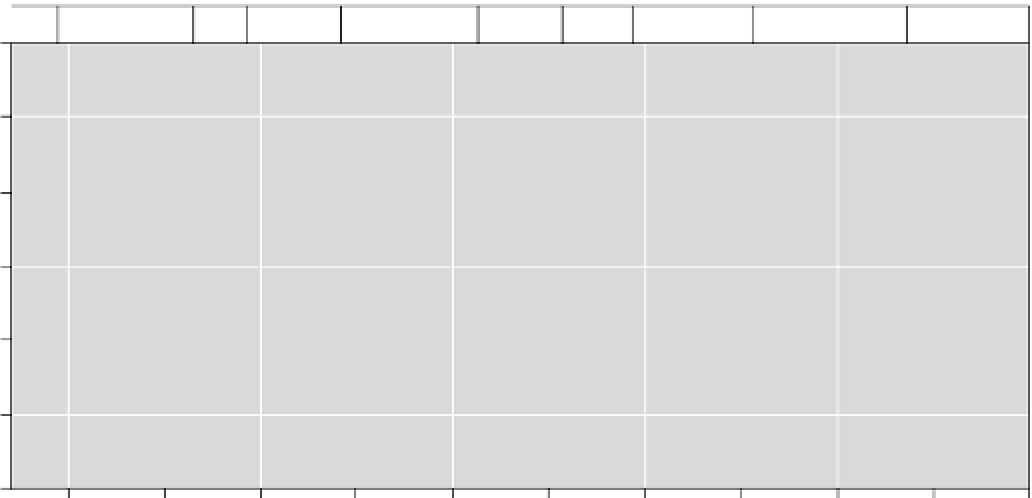Geology Reference
In-Depth Information
Table 14.5 Quasi-periodic sea-cycles revealed by seismic stratigraphy
Cycle order
Duration (years)
Eustatic expression
Possible cause
First
More than 50 million
Major continental flooding cycle
Change in ocean volume owing to sea-floor
spreading rates and continental dispersal
Second
3 million to 50 million
Transgressive-regressive cycles
Change in ocean volume owing to sea-floor
spreading rates
Third
500,000 to 3 million
Sequence cycles
Unclear
Fourth
80,000 to 500,000
Systems tracts
Orbital forcing in the Croll-Milankovitch
frequency band
Fifth
30,000 to 80,000
Episodic parasequences
Orbital forcing in the Croll-Milankovitch
frequency band
Sixth
10,000 to 30,000
Episodic parasequences
Orbital forcing in the Croll-Milankovitch
frequency band
Source:
Partly adapted from Vail
et al
. (1991)
has a distinct signature. First-order cycles reflect major
continental flooding. Second-order cycles register
facies changes associated with major transgression-
regression cycles. The lower-order cycles record strati-
graphic deposition sequences, systems tracts (sets of
linked contemporaneous depositional systems), and
parasequences (the building blocks of systems tracts). The
changes in sea level resulting from the first- and second-
order cycles can be as much as 250 m (Figure 14.9).
Such very long-term changes of sea level provide a useful
Cambrian
Ordovician
Silurian
Silurian Devonian Carboniferous Permian Triassic
Jurassic
Cretaceous
Cenozoic
200
100
0
500
400
300
Age (millions of years)
200
100
0
Figure 14.9
Proposed Phanerozoic eustatic curve.
Sources:
The Palaeozoic section is adapted from an average estimated by Algeo and Seslavinsky (1995) and the Mesozoic
and Cenozoic portion is adapted from Haq
et al
. (1987)




